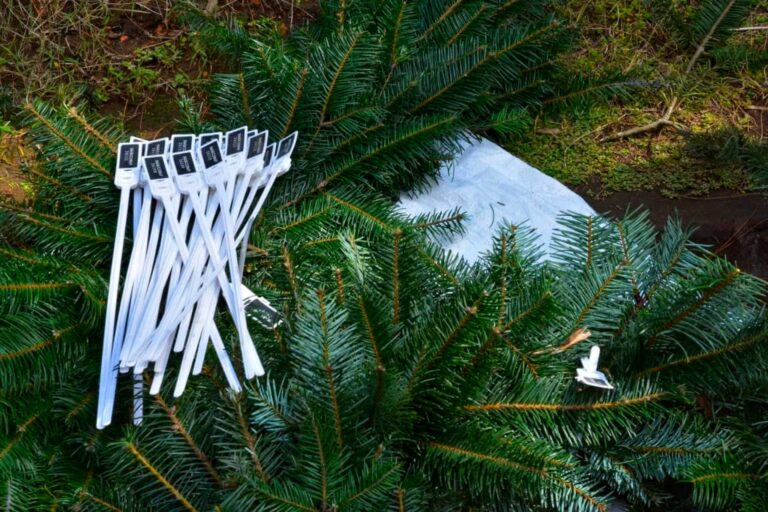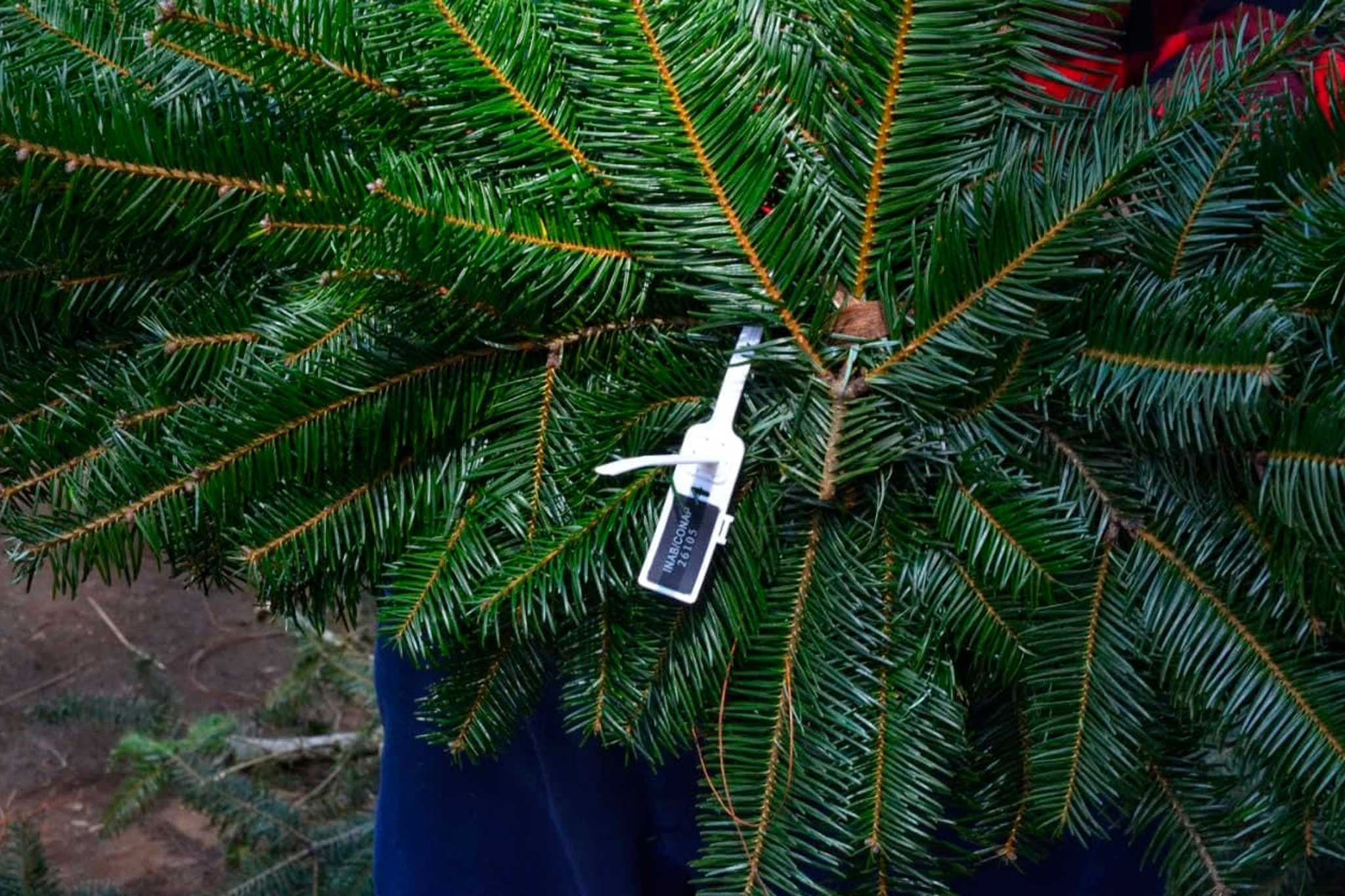Without a label there is no Christmas tree
The Christmas season is here, which in Guatemala is synonymous, for many people, of placing a pine tree with ornaments and wreaths with the same kind of decoration, out of a species of a Spruce tree (Abies guatemalensis Rehder). It is an endangered species that faces illegal logging and trade, but some pine growers in the country promote the use of a marking or label, to contribute to conservation.
This has been the case of Pedro Cristal, 60, who has marketed his products for three years. The 0.59 hectare Pinabetes Ixin Samajel plantation is located in the Chajalajya village of the municipality of Tecpán Guatemala, Chimaltenango.
At the age of 10, he began his life as a laborer on the southern coast of the country. He dedicated some of his life at harvesting cotton. He tried his luck in the city, but his life was, is and always will be the natural areas, the woods, he says. Now together with his son José, 26 years old, they are dedicated to the production of spruce and the elaboration of wreaths and garlands.
Families can visit the spruce plantation to choose the tree with a mark, or label. Direct contact with nature makes it an unbeatable experience. You can check the farm’s location here in Waze.
There are 945 plantations in the country, in which the National Forest Institute (INAB) has provided technical and administrative support for the production of pine trees. Together with the National Council of Protected Areas (CONAP) they promote the marking of plantations to prevent the illegal logging and trade of the trees.
The marking, or label, guarantees people that the products come from pine tree plantations and nurseries registered in INAB. This not only generates income for the families that own plantations, but also contributes to reforestation and takes pressure off the pinewood forests.
According to the forestry engineer Sergio Osorio, in charge of INAB, these forests share their distribution area with areas of greater poverty and with dense populations. He explains that this causes deforestation, and illegal exploitation.

Guatemala has 945 plantations registered for the production of spruce trees. The label prevents illegal logging and trade. Photo: María Jossé España/Viatori
How is the preservation of the species guaranteed?
The pine tree grows in high parts of the country. It is characterized by having lateral shoots, from which the growth of a new tree is encouraged. This means that it sprouts to the sides from the dominant stem. Therefore, it must be taken care of by the producers in the pruning, which gives its peculiar conical shape. A specimen takes four to seven years to grow.
The training on pruning and phytosanitary sciences is in charge of the INAB. In these they prevent pests and diseases, taking into account seed selection, planting site, and branch management.
According to INAB, there are an estimated 25 thousand hectares of wild pine in San Marcos, Quetzaltenango, Huehuetenango, Totonicapán, Quiché, Jalapa, and El Progreso.
A Christmas conservation campaign
With the “Campaign for the Control and Conservation of the Pine Tree, Christmas Season 2021”, from November 11 to December 23, authorities are making operatives on roads to verify if the trees and by-products have the label. With this, all institutions keep a control of the quantity of legal products.
Within the monitoring and control (in situ and ex situ), five regional delegations of CONAP will participate, in coordination with the Nature Protection Division of the National Civil Police (DIPRONA), the Prosecutor’s Office for Crimes against the Environment of the Public Ministry, the Association of 48 Cantons of Totonicapán, municipalities and NGOs.
The campaign also includes Christmas fairs in the departments of Quetzaltenango, San Marcos, Huehuetenango, Chimaltenango and in the Handicraft Market in zone 13 of the capital. By buying branded pine tree, you support the generation of income for the producer families, and the conservation of the species.
